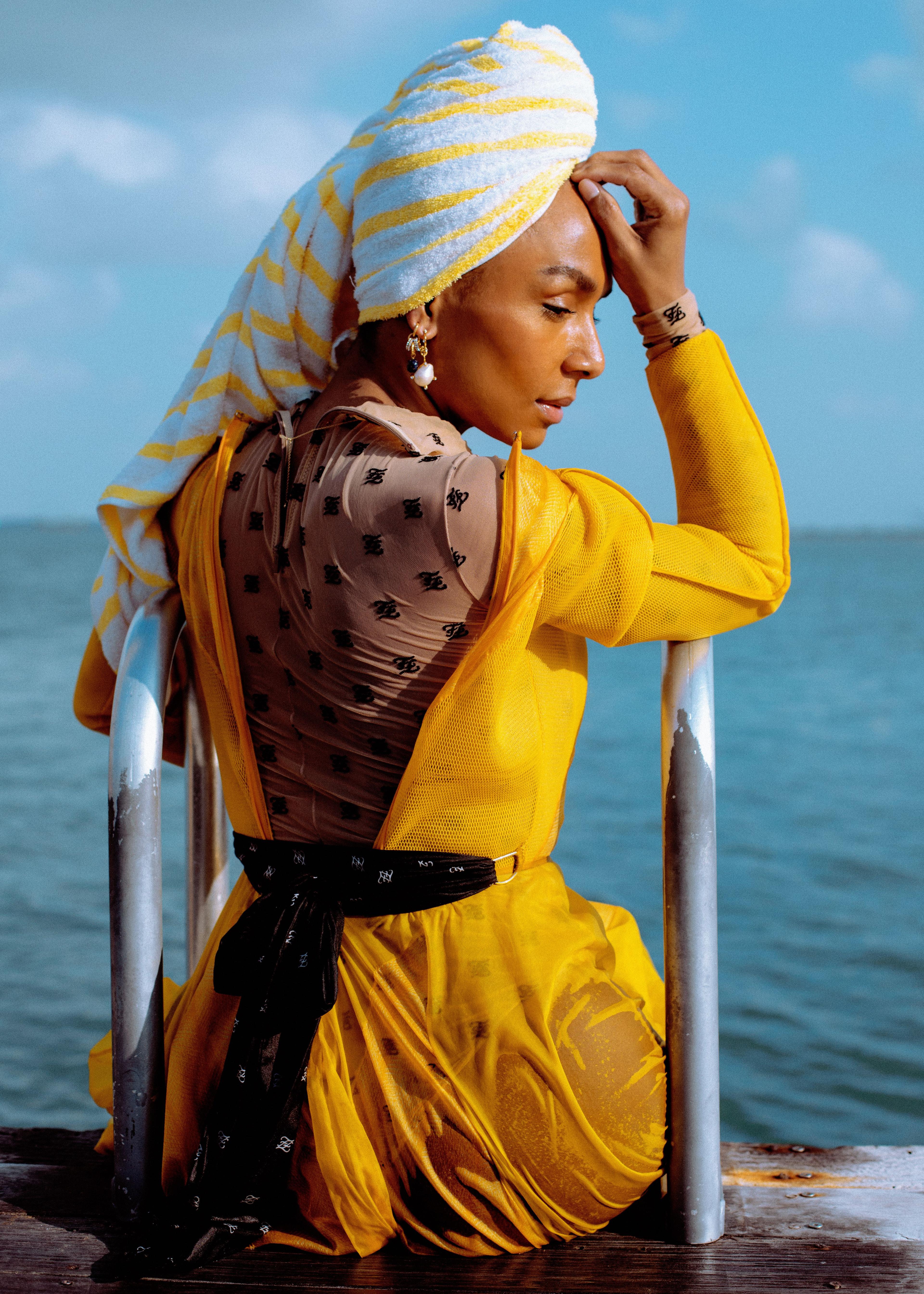Select a category
Fashion
For Photographer Lia Clay Miller, Representation is All About Intimacy
For Photographer Lia Clay Miller, Representation is All About Intimacy
by Elyssa Goodman
SHARE
Lia Clay Miller may be recognized as the first trans photographer to shoot the cover of OUT Magazine, but her work goes beyond the surface of her identity.
It’s not easy to capture grace, the elegance of existing, and the power in vulnerability. And yet, looking at Lia Clay Miller’s deftly crafted images, there it is on bodies that somehow float though they’re on solid ground, coquettish under clear ponchos, glamorous in gowns and gloves by parking lots, leaning on side streets smoking cigarettes.
Janet Mock © Lia Clay Miller for Out Magazine
While originally Clay thought she might work as a photography editor, freelance photography fell into her lap and her successes are countless. The photographer, who was recently named one of the British Fashion Council’s New Wave: Creatives, has shot portraits of everyone from Hillary Clinton to Janet Mock to Fran Lebowitz for W, Interview Magazine, The New York Times, and many others. In 2019, she became the first trans woman to shoot covers for Out magazine.
Clay started taking pictures at 17 when she picked up her grandmother’s Olympus camera. She has been creating and recreating her photographic philosophy over the last 11 or so years. “I think a good photographer is never truly done figuring it out,” she tells The Luupe.
Author Fran Lebowitz, 2019. © Lia Clay Miller for Candy Magazine
In her first years as a photographer, Clay says, she felt deeply about representation in her work. She featured bodies – particularly people in the queer community – in front of the lens who were often excluded from traditional visual media narratives. As a teenager just getting behind the lens for the first time, Clay was inspired in part by the work of Ryan McGinley (she also cites Carrie Mae Weems and Mary Ellen Mark as influences), which she found in TAR magazine in 2008.
Seeing McGinley’s use of androgynous models resonated with her as she grappled with her contemplated her own ideas of gender, she told The Society of Publication Designers in 2018: “As someone struggling with gender identity, this newfound rebellion against conservative body standards that I was taught growing up within the South was sort of a revelation.”
But her viewpoint has since changed slightly.
Maya, 2019 © Lia Clay Miller
“I think over the past four years, [representation has] become redundant. It’s still important, but not in the way that it’s being used. Visibility is always demanded, and hardly for the sake of the people who are constantly being asked to be visible,” she says. Instead, she’s started to focus on her work and how it’s portrayed out of the context of who she is as an individual.
“I’ve grown slightly passive about the conversation around my photographs. I want them to be just that — photographs. I’d rather the representation be less about myself, and more about who’s in them.”
Sage, 2019 © Lia Clay Miller
Jamie Clayton © Lia Clay MIller for Candy Magazine
Clay’s work is an act of intimacy instead of voyeurism, a revelation of beauty and not disparity. Even so, it’s not something people see as often as she’d like and she finds herself regularly having to resist tokenization. “I don’t know how many pitches I get a week where they want me to keep portraying the same stories, the same rhetoric, the same victimization of my communities,” she says. “I never expected representation to be hurtful, but it is. We deserve more. We are so much more.”
Harajuku, 2018 © Lia Clay Miller
Vogue superpower Pony Zion © Lia Clay Miller for The Cut
Clay has also started turning down assignments where she doesn’t see herself, her eye, playing the role she would like to have. She doesn’t want to be pushed toward making images in someone else’s vision. “I am very stubborn in my approach to image-making. I have a certain idea about something. If you want something else, it’s very hard to get me to that place,” she says. “I’m actually a terrible photographer when my heart’s not in it.”
Clay’s talent speaks for itself in both her technical skill and the way she empowers her subjects, but she fought and is still fighting to get her work the recognition it deserves. “I’m still trying to be recognized at a level in which I’m being asked to work in the same capacity as my cis counterparts,” she says.
MJ, 2019 © Lia Clay Miller for OUT Magazine
“As much as it’s about veering away from always pointing the lens at my individual self, it’s still important to me to be a trans woman in this industry rising to the top. I want to be the first trans woman to photograph a cover for Vogue, or the first trans woman to be signed to a photography agency,” she says. “Those are still goals for myself that I have, and they mean something to me. But it means more to me to be hired as a talented photographer, rather [than] a trans woman.”
ABOUT THE AUTHOR
Elyssa Goodman
New York-based writer and photographer specializing in non-fiction writing and documentary photography.
